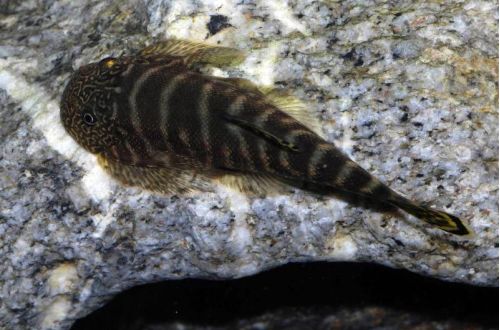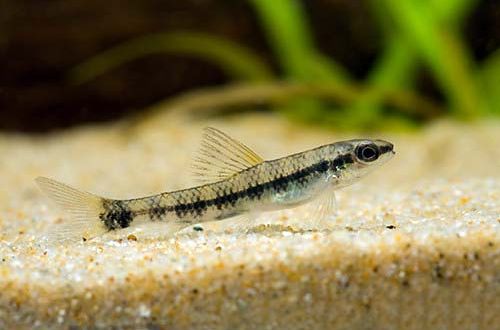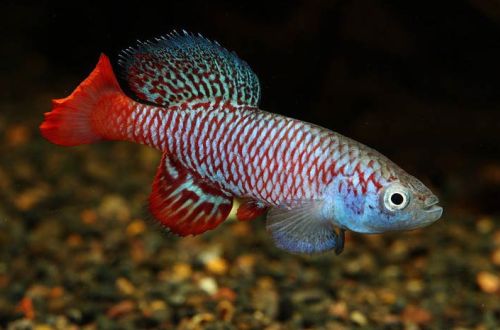
Gastromizon viriosus
Gastromyzon viriosus, scientific name Gastromyzon viriosus, belongs to the Balitoridae family. It is not often found on sale, it is mainly supplied in batches together with other gastromisons. Not the easiest view to keep. Needs very clean running water and a fairly strong current. Not recommended for beginner aquarists.

Contents
Habitat
Comes from Southeast Asia. Endemic to the island of Borneo. It is found only in the basin of the Tatau River, which flows through the central part of the Malaysian state of Sarawak. Inhabits the upper reaches of the river, which originates in mountainous areas. A typical biotope is a fast stream with a turbulent stream with substrates of stones, boulders. Aquatic vegetation grows mainly along the coast or on snags submerged in water.
Brief information:
- The volume of the aquarium – from 60 liters.
- Temperature – 20-24°C
- Value pH — 6.0–7.5
- Water hardness – soft to medium hard (2-12 dGH)
- Substrate type — stony
- Lighting – moderate / bright
- Brackish water – no
- Water movement – moderate or strong
- The size of the fish is about 5 cm.
- Nutrition – plant-based sinking food, algae
- Temperament – peaceful
- Content alone or in a group
Description
Adult individuals reach a length of about 5 cm. The body shape is typical of other gastromisons and is adapted to withstand turbulent flows – strongly flattened from above and looks like an elongated drop of water with a rounded head and a pointed tail. The pectoral and ventral fins are wide and fan-shaped. The coloration is dark brown with 8–10 transverse light stripes on the back.
Food
In nature, it feeds on algae growing in a thin film on the surface of stones, and on microorganisms inhabiting them. In a home aquarium, food should also contain a large amount of plant material. The ideal option is to ensure the natural growth of algae, however, it is fraught with the danger of their uncontrolled growth. In conditions of strong current, most dry food (flakes, granules) will begin to circulate throughout the volume, so it is unlikely to be suitable for use. A good alternative would be specialized gel or paste feeds that can be applied to any surface and not be afraid that it will be picked up by the current and carried away. The gel is placed in different areas so that the fish do not quarrel over food.
Maintenance and care, arrangement of the aquarium
The optimal size of the aquarium for a group of 3-5 fish starts from 60-70 liters. The key to long-term maintenance of Gastromizon viriosus is to recreate an environment that resembles its natural habitat. It is necessary to provide a sufficiently intense internal flow and high quality water (low concentration of pollution), rich in dissolved oxygen. A productive internal filter can cope with these tasks, which will ensure the proper movement of water and its purification. It is desirable that the circulation of water is 10-15 cycles per hour. For example, for an aquarium of 100 liters, a filter is needed that can pump through itself from 1000 liters in one hour.
Only heavy objects are used in the design: rocky soil, large snags and other massive decorative elements. At a high level of illumination, the surface of the snags can be covered with algae – an additional source of food. As aquatic plants, their artificial counterparts are placed or unpretentious varieties are planted that can tolerate such conditions. For example, Anubias, Crinums, Javanese ferns, etc.
Behavior and Compatibility
If food is available everywhere, then the fish will not compete with each other. In this situation, peacefully tuned to each other. Compatible with non-aggressive species of comparable size capable of living in similar turbulent conditions. Other gastromisons, loaches, and some cyprinids can be considered as neighbors.
Breeding / breeding
Due to the low prevalence of gastromisons in the hobby aquarium, there is not enough information about their reproduction in home aquaria. It is noted that a high-protein diet and a change in water temperature serve as an incentive for reproduction. First a gradual increase over 8 weeks from 24°C to 30°C. High values were maintained for 3 weeks, then dropped back to normal. Water movement should be significantly reduced. Upon completion, the formation of a masonry of several tens and hundreds of tiny ones less than 1 mm in size is likely. The incubation period lasts about 3 days. Parental instincts are not developed, there is no care for offspring. The fry are extremely sensitive to water quality, any, even minor pollution, for example, the plant withered and began to rot, will negatively affect their well-being and can lead to the death of the entire brood.
Fish diseases
Health problems arise only in case of injuries or when kept in unsuitable conditions, which depresses the immune system and, as a result, provokes the occurrence of any disease. In the event of the appearance of the first symptoms, first of all, it is necessary to check the water for the excess of certain indicators or the presence of dangerous concentrations of toxic substances (nitrites, nitrates, ammonium, etc.). If deviations are found, bring all values back to normal and only then proceed with treatment. Read more about symptoms and treatments in the Aquarium Fish Diseases section.





